Colombia: Colour, Coffee, Culture & Cuisine
Rachel (South America Travel Centre Travel Specialist) travels to colourful Colombia...
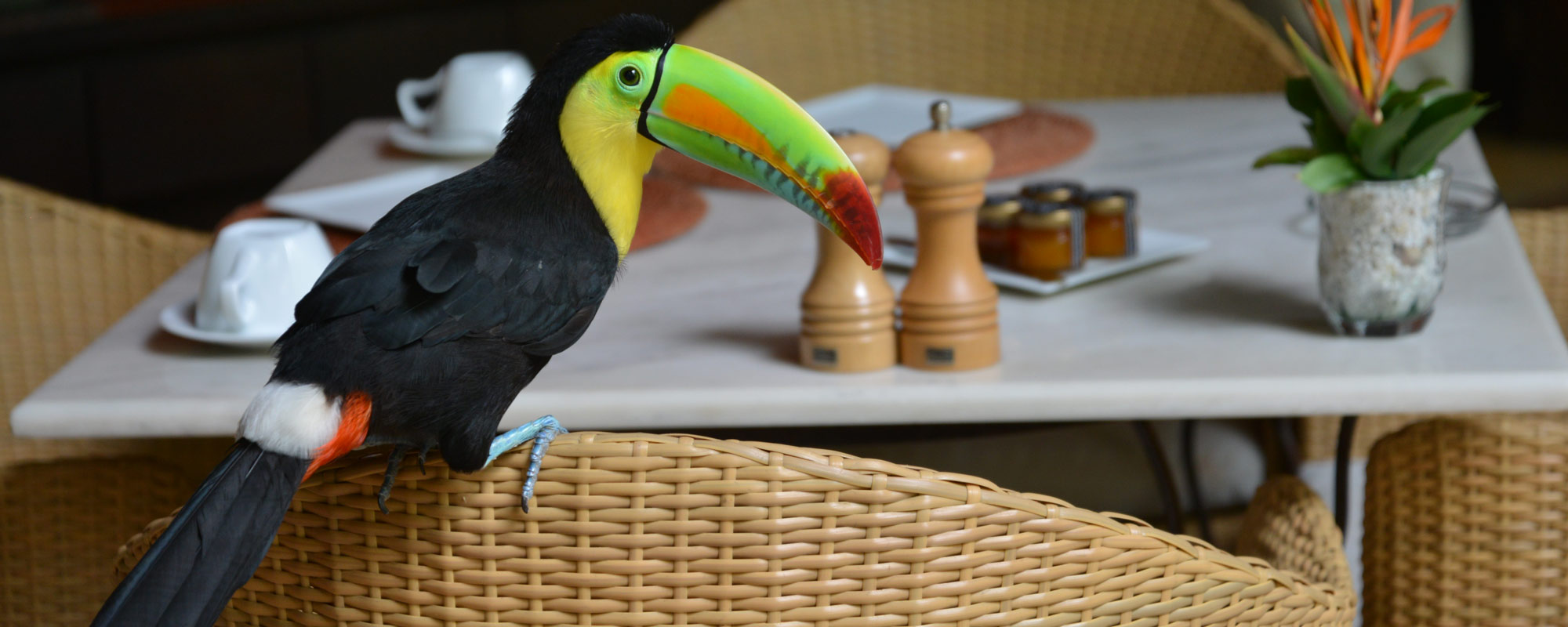
Being the only country in South America to have both an Atlantic and a Pacific coast, Colombia has great cultural diversity. From Andean to Afro-Caribbean, and a topography that includes the Amazon jungle in the south and long mountain ranges stretching up from Ecuador to the lowlands of the tropical northern coast. Let us help you make the perfect tailor-made itinerary for your visit to Colombia. With the knowledge of local guides, private transfers and luxury accomodation, your trip to Colombia won’t be forgotten anytime soon.
Whether you want to wander the cobbled streets Cartagena’s old walled town, see some of the 300 species of birds in the Tayrona National Park, be in awe at Bogota’s gold museum, visit the Zipaquira Salt Cathedral or make your way through the Coffee Triangle, Colombia’s diversity is waiting to be explored.
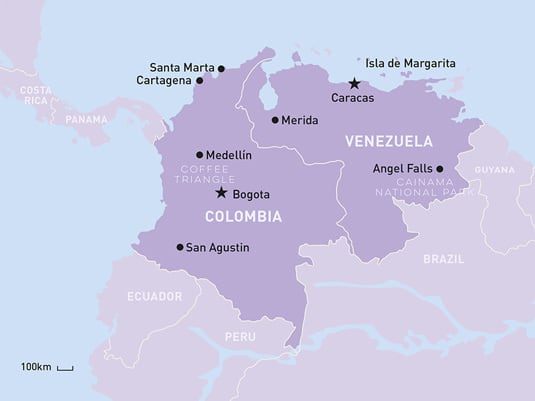
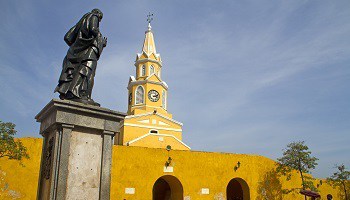
One of Colombia’s colonial gems is the old Spanish fortress town of Cartagena, a World Heritage site only a 40 minute flight from the capital, Bogota. Once a lively Caribbean port that was often plundered by pirates for the Spanish gold held there, Cartagena today is famous for its walled Old Town where you can walk the narrow cobblestone streets, look at the monuments, churches and Spanish colonial buildings – the Palace of the Inquisition, the Clock Tower and the Castle of San Felipe de Barajas – and enjoy the warm breezes as you pass through the squares and plazas.
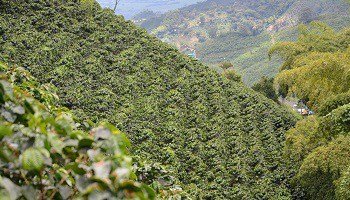
This region is a real surprise to many, especially for its impressive landscape and coffee farms. The higher elevation, cooler climate and rich volcanic soil of this area in the mountains of western Colombia determined it would become the cradle of Colombian coffee culture. It is seductively aromatic, with a laidback lifestyle, and aside from the chance to see, taste, and learn everything about the almighty bean, this region has also become a centre for great eco-activities – it must be all that caffeine!
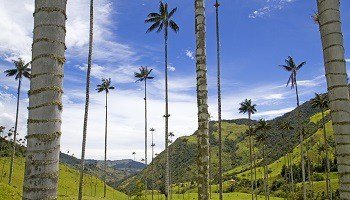
To prevent exploitation of the wax palm and the threat against the endemic species dependent on the palm, mainly due to the celebrations of Palm Sunday, the government of Belisario Betancur proposed the creation of a wildlife sanctuary and the preservation of the wax palm as the national symbol of Colombia. Law 61 of 1985 was ratified on 16 September 1985.
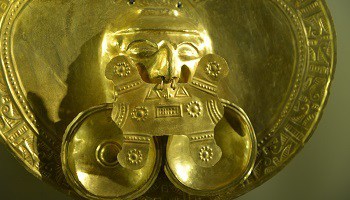
The Bogota Gold Museum is a must for anyone visiting Colombia (Bogota). Known locally as the Museo del Oro it is one of the finest museums in all of South America. The museum is beautifully laid out with over 55,000 objects displayed over three floors. Exhibits are from the major pre-hispanic cultures of Colombia, with the oldest dating back to the Muiscas between 1200 and 1500 B.C. Renovated and expanded in 2008 each exhibit is labelled in English and you’ll need at least an hour to discover its many wonders.
You’ll fin winged fish, ornately decorated figures, armbands and breastplates on display here. A golden Muisca Raft is one of the highlights of the museum. Discovered in 1886 in a Colombian cave. The piece depicts a local chieftain standing on a raft and surrounded by priests and oarsmen. The image recalls the ceremony recounted in the legend of El Dorado in which a new chieftain would sail with important members of the community to the middle of Lake Guatavita to leave gold offerings to an underwater-dwelling god, tossing the precious metal into the water.
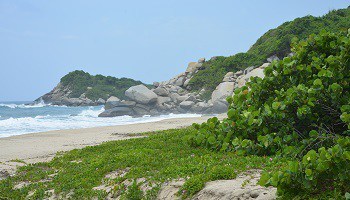
In the far north-west of Colombia, Santa Marta is the gateway to Tayrona National Park. The park contains some of the most lovely and undiscovered beaches of the Caribbean, and there are archaeological sites of the pre-Hispanic Tayrona Indians that went unnoticed by the Spanish colonisers for centuries. Much of the area was once the Indians’ territory and, of the number of archaeological sites found, El Pueblito (Chairama in Tayrona Indian language) is the most important. Built on 250 terraces, it is a well-preserved hillside village that provides a good impression of the lives of the Tayrona people, and the short jungle trek to reach it is equally spectacular. This was once one of their largest settlements with around 2000 inhabitants living there between 450 and 1600 AD.
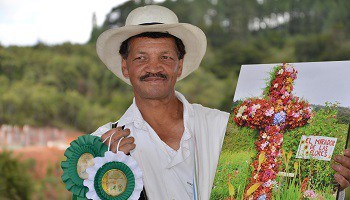
Medellin is all too often remembered because of one of it’s past inhabitants – Pablo Escobar and the Medellin drug cartel he ran. Colombia and Medellin have moved forward such a very long way since the days of the cartels and The FARC (The Revolutionary Armed Forces of Colombia). In simple terms the government took back control of the country in 2002. More recently FARC has signed an agreement to cease all hostilities, and the reality is Colombia has been safe for travel for more than a decade.
Medellin is incredibly clean, has a wonderful cable car and metro train system and has a pleasant year-round climate, it’s inhabitants are very proud of their city. The biggest event in Medellin is the famous “Feria de las Flores” (Flower Festival) when many hundreds of rural campesinos descend on the city streets to join the Parade of the Silleteros. This remarkable spectacle sees men and women of all ages carrying on their backs huge, heavy and stunningly intricate displays of flowers arranged on extravagant 2-metre disks called ‘silletas’. The story goes that the wooden silletas were once used by slaves who were forced to carry rich people on their backs up and down the city’s surrounding mountains – but now the proud country folk carry only flowers.
Officially opening the festival is another of the largest and most popular events, the ‘cabalgata’, a 3-hour parade that features more than 6,500 locals on horseback and begins dramatically with fireworks in Colombia’s colours of red, yellow, and blue filling the sky.
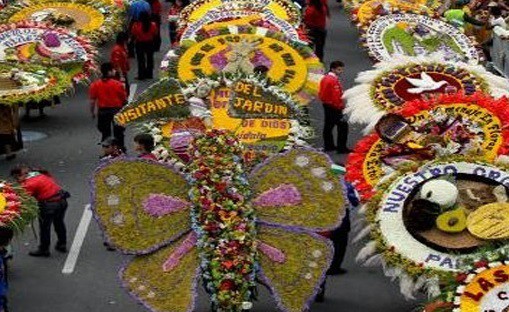
A city known for its pleasant year-round climate, Medellin’s biggest event is the famous “Feria de las Flores” when many hundreds of rural campesinos descend on the city streets to join the Parade of the Silleteros. This remarkable spectacle sees men and women of all ages carrying on their backs huge, heavy and stunningly intricate displays of flowers arranged on extravagant 2-metre disks called ‘silletas’. The story goes that the wooden silletas were once used by slaves who were forced to carry rich people on their backs up and down the city’s surrounding mountains – but now the proud country folk carry only flowers.
Started in 1957 and referred to simply as “The Flower Party”, the original festival lasted only 5 days. Today the silleteros’ parade is the crowning event of what has become a 10-day festival with many other events including classic and antique car parades, folk music concerts, and an exposition of birds, exotic flowers and orchids (the national flower). Officially opening the festival is another of the largest and most popular events, the ‘cabalgata’, a 3-hour parade that features more than 6,500 locals on horseback and begins dramatically with fireworks in Colombia’s colours of red, yellow, and blue filling the sky.
A massive influx of tourists arrives from all over the world to witness this multi-day event and the city becomes a profusion of sound and colour, its balconies, terraces, gardens, and fences bedecked with flowers and flags.
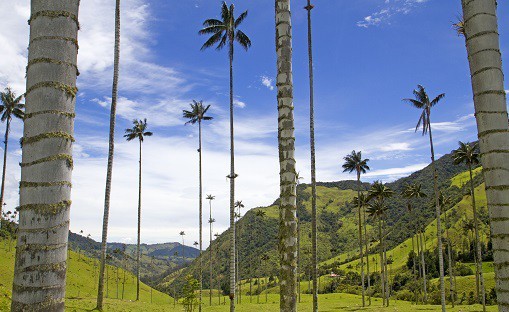
A real surprise to many, especially for its impressive landscape and coffee farms. The higher elevation, cooler climate and rich volcanic soil of this area in the mountains of western Colombia determined it would become the cradle of Colombian coffee culture. There are so many delightful places to visit and things to do – among our favourites are:
A visit to the lush Valle de Cocora, its perpetually mist-covered hills scattered with towering wax palms (Palma de Cera), Colombia’s national tree that grows to 50 metres and more.
A stroll around Salento, a typical paisa (native Colombian) village, lovely and quiet, enjoying the brightly coloured Spanish colonial buildings, beautiful handcrafts shops and friendly people.
And, for an interesting insight into coffee production, a visit to the beautiful Hacienda San Alberto farm to learn all about the process from start to finish, topping it off with a ‘sensory tasting experience’ of delicious premium high mountain coffee.
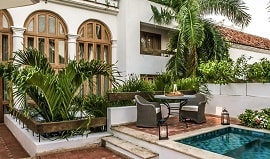
Hotel Casa San Agustin
Cartagena, Colombia
Top class design and the finest facilities. Usually located in a spectacular setting it may be an exclusive hotel in a meticulously restored historic building, or recognised as the leading property of an international chain.

Ananda Hotel Boutique
Cartagena, Colombia
A perfect alternative to the big brand hotels:
exclusive and independently-owned properties with a smaller number of rooms and highly personalised services.
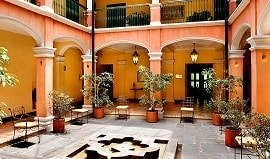
Hotel De La Opera
Bogota, Colombia
High quality with an excellent room standard, a full range of facilities and first-rate service; may be a new property or regularly refurbished with attention to ongoing maintenance.
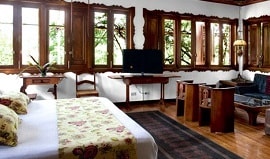
Hacienda San Jose
Pereira, Colombia
Haciendas ‘estates’ are found across much of South America and may have been plantations, cattle or sheep ranches. Most date from the 18th & 19th centuries and offer guests an opportunity to glimpse the world of the land barons and their famed horsemen. These beautiful colonial residences, set in extensive gardens or on wide farmland, retain their original style and ambiance, with high beamed ceilings, open fireplaces, and spacious rooms filled with antique furnishings.

Ecohabs Tayrona
Tayrona National Park Santa Marta, Colombia
In the rainforests and jungles of Colombia choose from a small number of eco-lodges, thatched cabañas overlooking the Caribbean Sea location, to remote and rustic cottages offering a truly authentic experience. Most lodges are eco-conscious and dedicated to conservation management and preservation of their environment.
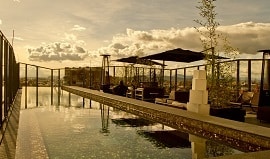
B.O.G
Bogota, Colombia
Bogota and Cartagena, in particular, have many fine new build hotels that are exclusive, sophisticated and luxurious. These properties cater for your every need and will be a surprise to many visitors with their very high standards.
Tourist-superior and tourist class accommodation is also available. For more information on the accommodation we offer, call 1300 784 794 or email contact@satc.com.au.
South America Travel Centre can look after all aspects of your holiday, including flights and travel insurance.
We start by asking you what your interests are and where you are interested in, when, for how long, what standard and style of accommodation (it can be a combination – for example you may wish to celebrate a special occasion while you’re away by staying in a very special property or place). Once we have a good understanding of just what you’re looking for, we can begin to create a holiday to meet your time and budget requirements and, most importantly, that will deliver interest and enjoyment in an experience to exceed your expectations.
Please book early. Many of the hotels, lodges and cruise vessels we recommend are relatively small. For example, the Hacienda San Jose accommodates just 20 guests. This exclusivity combined with high demand means they can be booked out up to 6-8 months in advance.
If you’re thinking of travelling during any major holidays like Christmas, New Year and Easter, or during any festivals, our advice is simply to book as early as you can, even 12 months or more, and we can add flights as soon as they become available.
Australian citizens do not require a visa to enter Colombia. You will need to hold a valid passport and have a return ticket when you arrival.
It is strongly recommended that all travellers to Colombia be vaccinated for yellow fever before commencing their trip.
Vaccinations are advised for common diseases like Hepatitis A and B, Typhoid as well as Influenza. There are no compulsory vaccinations.
We advise you to consult a Travel Doctor specialist prior to departure to assess any health risks in relation to your medical history and travel plans.
We have access to a wide range of airfares and have excellent relationships with our key airline partners. Our two main airline partners in Latin America are LATAM Airlines, QANTAS Airlines and Air New Zealand. We can also arrange internal flights for you within Latin America.
Irrespective of whether you book directly with us or with your preferred travel agent, we’ll request the details of all of your fights to ensure if there are any changes your transfers and other arrangements are adjusted accordingly.
You can visit Colombia all year-round as it stays around 16-27°C all year round.
December- March
Is the best time to travel to Colombia. This period receives the least amount of rainfall (except for the Amazon Region) making it mainly sunny and warm.
April-June
This is a busy time in Colombia because of Easter. It also marks the rainy season in Bogota, Medellin and Cali.
July to September
This is the dry season in the Andes region and the surrounding countrysides, jungles and beaches. In the South, they receive showers daily but don’t last too long.
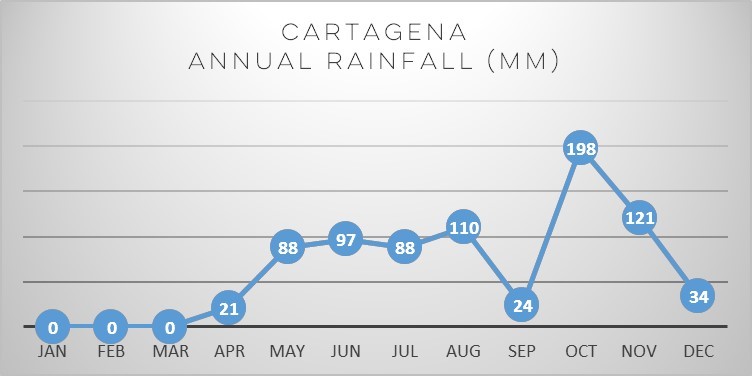
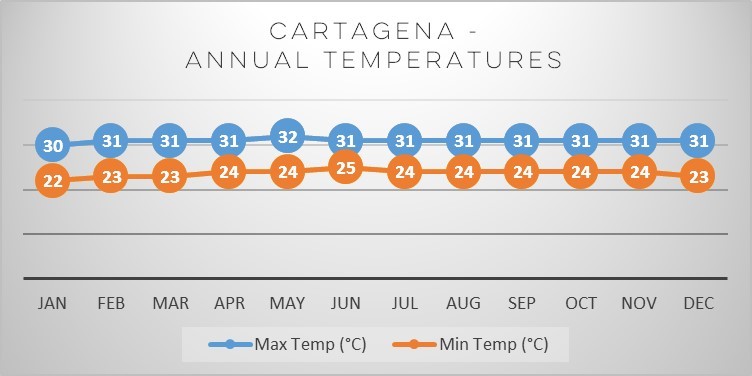
Rachel (South America Travel Centre Travel Specialist) travels to colourful Colombia...
There are a growing number of excellent properties in South America that are now part of ‘Relais & Chateaux’. We thought we’d tell you a little about some of the properties our guests regularly experience and thoroughly enjoy....
Colombia’s Caribbean coastline is home to a city that has seen the worst of history. Thankfully, as Cam Cope, travel writer for Get Lost Magazine, discovers, it now seems destined for a far more creative future. 'Even from two blocks away I can tell it’s live salsa. I’m on Calle de Media Luna, the street where Africans in chains were once marched straight from the slave ships.'...
Now back in Sydney after a wonderful holiday. The EcoCamp was also fantastic! The whole holiday was co-ordinated beautifully – everything just flowed from one adventure to the next without a single problem. We now have 100’s and 100’s of absolutely spectacular photos to sort through. Interestedly we had 8 different flights whilst we were away and each one of them was either full or nearly full – people are obviously travelling again. Thank you so much for all your assistance in co-ordinating our Patagonia experience. With Kindest regards Joe & Judy
Joe & Judy
Now back in Sydney after a wonderful holiday. The EcoCamp was also fantastic! The whole holiday was co-ordinated beautifully – everything just flowed from one adventure to the next without a single problem. We now have 100’s and 100’s of absolutely spectacular photos to sort through. Interestedly we had 8 different flights whilst we were away and each one of them was either full or nearly full – people are obviously travelling again. Thank you so much for all your assistance in co-ordinating our Patagonia experience. With Kindest regards, Joe & Judy
Joe & Judy Chile February 2023
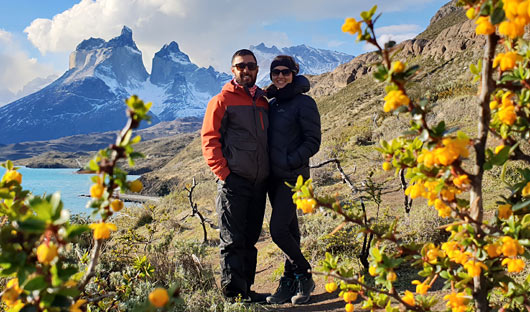
We cannot recommend Hayley from South America Travel Centre (SATC) more highly. Our entire trip was planned perfectly from the second we left Sydney. Not only did she incorporate all of our preferred destinations, Hayley also made suggestions on additional places based on our preferences and some of these turned out to be the highlights of our trip! We tend to be more independent travellers and Hayley was able to create the perfect mix of seamless travel with the flexibility for us throughout the journey to take advantage of any unexpected opportunities that arose. The guides at every location were extremely knowledgeable and offered excellent suggestions on everything from safety through to restaurants and laundry locations. I absolutely cannot fault the services provided both locally and in Australia from the SATC team.
Aimee Hudspeth and Shane R (Peru, Argentina and Chile)

Each pickup/drop off was on time. My guides were very friendly, had great English, and were passionate about what they did. All hotels were faultless. I would have to say that Andrea from Buenos Aires was the best guide of a fantastic bunch. Andrea was there to greet me on my first arrival into BA, took me to the ferry for my trip to Colonia and made sure I was checked in, and was there to pick me up. She was also there to send me on my way to Ushuaia at the ungodly hour of the morning and pick me up again after the cruise, to sending me on my way the next day to Iguazu. I was most impressed at the efforts the guides went to in order to streamline the check-in process at the airport, making sure I got to the immigration area. I have never seen or experienced such attentiveness or helpfulness.Thank you for putting this trip together for me, it was the best trip that I have been on, and I have done some out there trips. From the hotels, to the destinations, the ground arrangements, everything went off without a hitch. I truly appreciate what you did to make this trip amazing.
Carol Hofman (Antarctica, Chile, Argentina, Brazil)
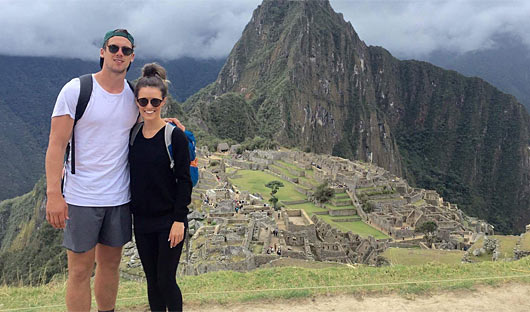
Our trip was absolutely outstanding thank you so much for your incredible efforts in what was such an incredibly short turn around. We are so grateful, it was the most amazing trip and every day was as good as the other! Anyone who has asked about our trip or has mentioned they are travelling or wanting to travel to South America I have put them straight onto South America Travel Centre. Thank you for all of your prompt responses, quick turn around and thorough knowledge, understanding, expertise and advice. Your service was second to none. It was outstanding and we are truly grateful. Please pass on our gratitude to the wider team as well for helping pull a once in a lifetime experience together for us in three days! We are so thankful for the afterhours and overtime you put in also, we couldn’t have had the amazing trip that we did at such late notice without you.
Emily and Kyle (Peru and Bolivia)
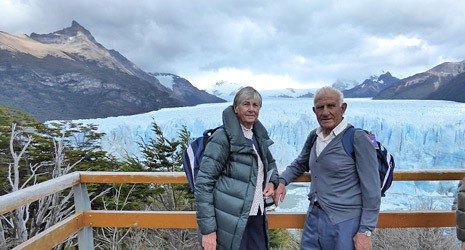
Being in our late 70 and having only travelled with groups, never on our own, we were a little apprehensive not speaking Spanish how well we would manage? I have nothing but praise for the service we received from South America Travel Centre. We were met at every destination by a knowledgeable person not always able to speak English but well able to take us to hotels, return us to bus stations and air ports, and check us in. Those who spoke English told us about their town the best places to eat. A wonderful holiday expertly organised and every little detail taken care of. Thank you South America Travel Centre.
Emmanuel and Kathleen Stathis (Chile and Argentina)
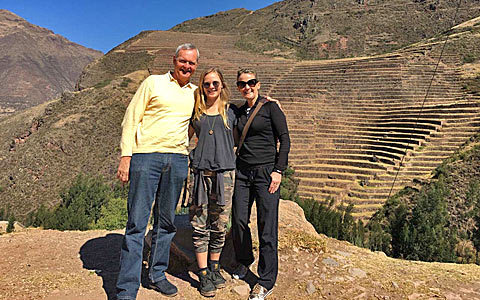
We found our itinerary absolutely perfect. By that I mean not only were our superb boutique hotels great, the guides in each city friendly, courteous, well-spoken and knowledgeable but the time in each city or location and the balance between site seeing “work" and leisure time “play” was also perfect. The most difficult question by friends on our return has been “what was the highlight”. An impossible question when considering the merits of, inter alia, Galapagos Islands, Machu Picchu, Iguazu Falls, Christ the Redeemer, Inti Raymi Festival, Lake Titicaca. The purpose of our trip to South America, in truth, was to see as much as we could of the continent with a view to probably not returning as we explored other opportunities. I have to now say that the chance of us revisiting South America is extremely high.
Nick Burne (Peru & Ecuador)
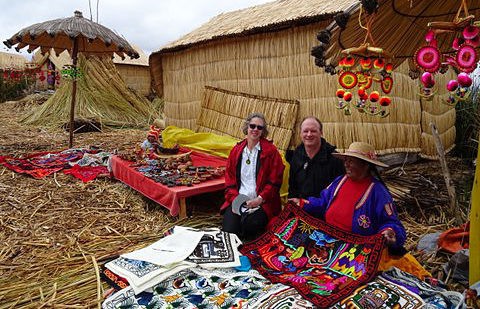
I write to thank you for organising our recent trip to South America. Everything went like clockwork, and the arrangements were very satisfactory. The guides always turned up at the right time, and the people meeting us at the airports were always there. We had a wonderful trip, and we will have to plan another one now, so that we can see Brazil, Argentina, Bolivia and Uruguay and maybe more. But first it’s back to work to earn some more money! For me the greatest highlight was Machu Picchu; it far exceeded my expectations. Once again, thanks so much, Alistair Macindoe.
Allistair Macindoe (Peru)
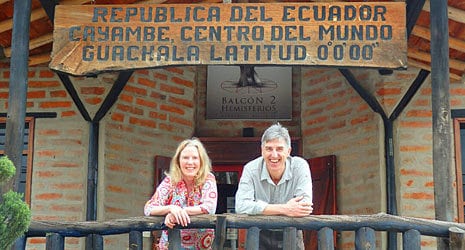
We had a fabulous time!! The countries we visited have such a rich and fascinating cultural & geographical diversity. We loved learning about the Incans and visiting the ruins in Peru, we loved seeing all the creatures of the Galapagos Islands and the volcanoes of Ecuador. We loved the magnificent scenery of the Atacama. What a fantastic palette at sunset! The adobe hotel, Altiplanico, was wonderful & San Pedro de Atacama was a funky place. We appreciated the structure of our holiday too, there was a nice blend of guided time and free time. It was nice to be in one place on the boat in Galapagos after moving to a different place each day through Ecuador. Some of the haciendas we visited would be lovely to stay for a longer time. Everything went very smoothly in terms of timely airport transfers & pickups, informative and friendly guides/drivers at all times. The local people were very friendly & were helpful with our attempts at speaking Spanish. We enjoyed the cuisine very much & look forward to trying some home-made Locro de papa soup & Pisco sour. Thanks for helping us with a great holiday. Kind regards Della & John
Della and John Moody (Peru, Chile & Ecuador)
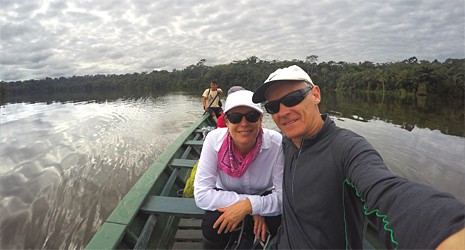
Having local guides and local knowledge was sensational and gave us a great insight into the cities and countries we visited. We loved the whole trip. One very big positive was every single time we arrived at a destination, there was someone already there to meet us and a transfer waiting to take us to the hotel or airport. We didn’t use trains and only used buses in Cuba which were very good for what we were doing. Our SATC consultant and her knowledge and experience was invaluable in both the lead up and the trip itself, with numerous hints and tips being very useful as well. The detail and documentation provided was excellent throughout and we used it extensively on our trip.
John and Andrea Webb (Chile, Peru and Cuba)

One of the most delightful things after travelling long distances is to be met at the airport, bags carried and be taken to the accommodation. It is just so good to see that sign with your name. Our latest itinerary with South America Travel Centre, in June 2016, took us to Costa Rica, Guatemala and Honduras. Costa Rica was about flowers, wildlife, volcanoes and zip lining. Guatemala and Honduras were about Mayan ruins with some wildlife in between. Although it was the rainy season, we found that rain sometimes occurred as a thunderstorm in the late afternoon, lasting about an hour. It was always a delightful surprise to find that our accommodation is not in a multistorey type edifice but in an architecturally interesting building with fascinating décor and views. We found this at each place we visited. Many of the breakfast rooms had a wonderful view of water, forest or volcano where we could sit and enjoy the local tropical fruits. Breakfast always included tropical fruit and fruit juice. We have returned home with photos galore.
Pam and John Cossey (Costa Rica, Guatemala and Honduras)
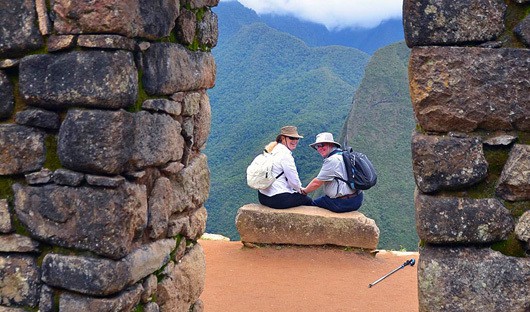
The incredible amount of work you put into the planning and organising really paid off. The South America Travel Centre documentation provided in the pouch before the trip was excellent. The selection and sequence of things worked well. The spiral bound book was used a lot during the trip. And on arrival back home, a pleasant surprise CD from your company. The chosen hotels were all very good to excellent to grand, and again the guides always made sure that we were properly checked in. Hotel locations are very important as this allows easy walking around the neighbourhood to explore at one’s own pace. Overall a ‘high five” for you and your team and agents. Thank you very much for your efforts and hope that our paths will cross again at some point in the future.
Dainis Kivlenieks and Wendy Burgess (Peru & Brazil)
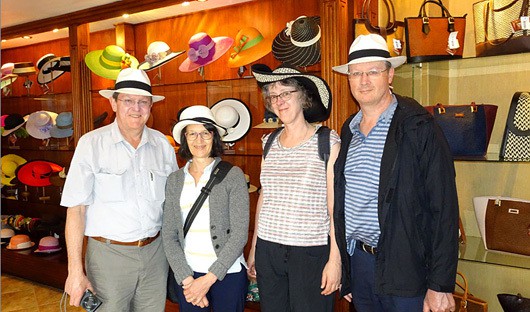
We have now been back from our wonderful holiday to South America for about 2 1/2 weeks, and I wanted to thank you very, very much for arranging such a fantastic trip for us. Everything went so smoothly, from the airport pickups, to the guides and drivers, to the wonderful accommodation – everything! We kept waiting for some little blip to occur, but it didn’t! You provided us with such a varied itinerary, we kept busy the whole time, and thoroughly enjoyed the whole trip. We both particularly enjoyed the Galapagos cruise, and also Machu Picchu. We all four climbed Huayna Picchu on our second day back at the site, and it was well worth the effort. Our guides and drivers were fantastic; we particularly enjoyed Silvia our guide and driver Marquito for the 5 days Andes experience in Ecuador. Once again, thank you so much for using your talents to give us such a memorable holiday. We will certainly be recommending you to our friends. With best wishes, Tony & Jan BURN
Tony & Jan Burn (Galapagos and Peru)
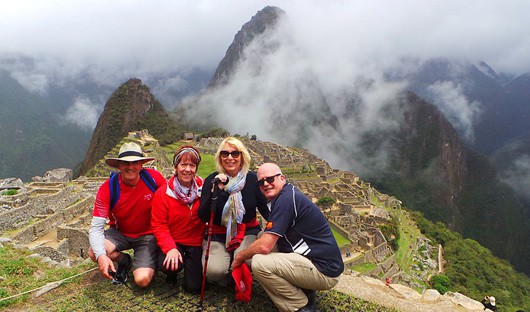
Back home safe and sound after an amazing holiday. Cannot say enough about South America Travel Centre – and will definitely recommend to anyone travelling to this continent. The guides Beatriz, Natoli Mary and 1 gentleman (Puno – cannot remember his name) were delightful, and drivers were very careful and drove to conditions. All accommodation suited our needs – especially loved Arequipa, Colca Lodge, Ollentaytambo and Inkaterra Amazonica!!! The care of your staff was above and beyond when situations arose due to not feeling so good. The day we left Colca Canyon Sue was unwell but Beatriz was amazing and after 24 hours all was ok. John requested medical attention on return to Cuzco and within 20 minutes a Dr appeared and then short time after a nurse appeared with medication – just fantastic. A big thank you to you for all your organisation and for playing a big part in making this holiday such a memorable one for all us.
Donna Abell